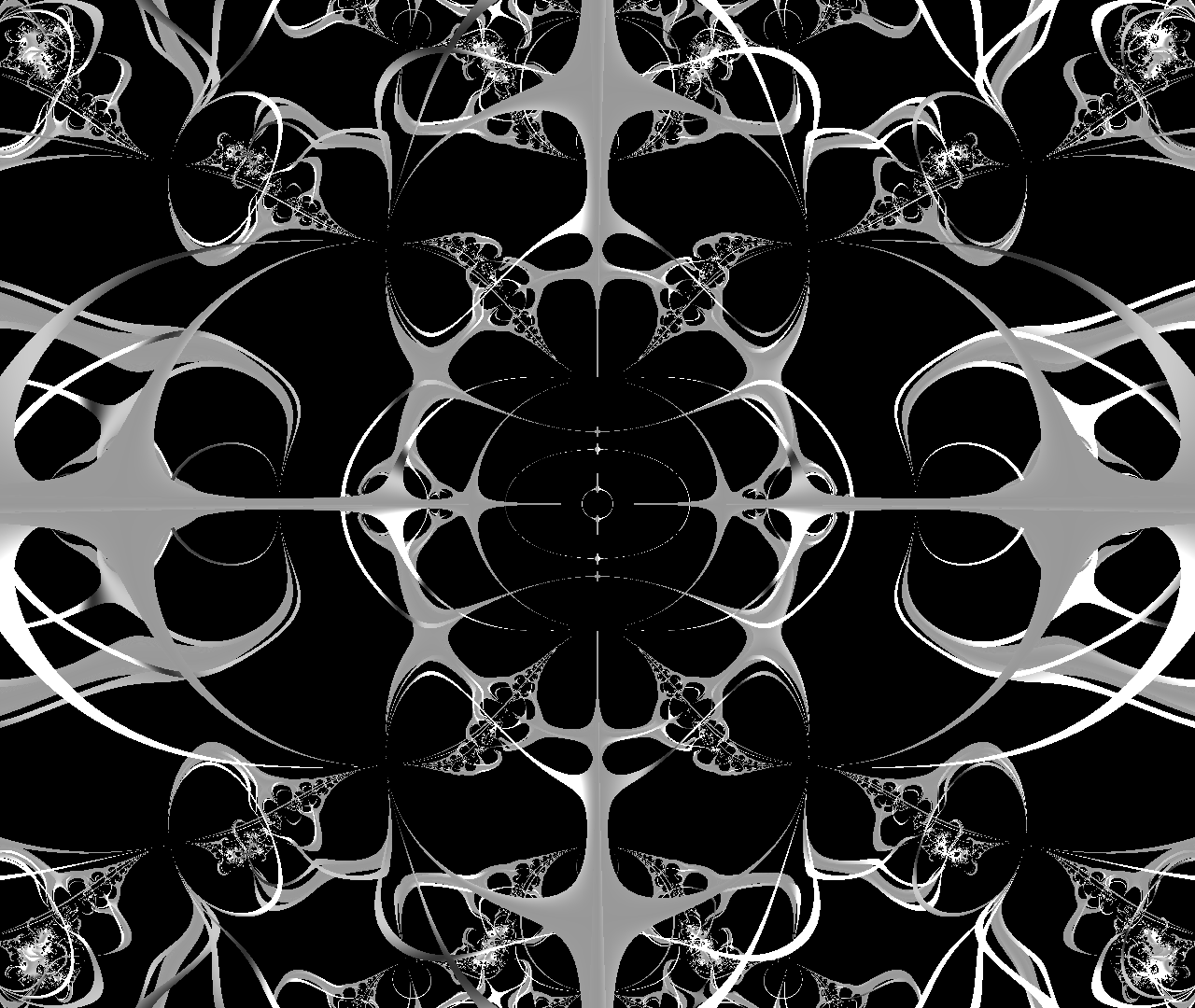Fractals are visualized in the complex number plane using a simple complex dynamical system equation that generates fractal chaos.
You can actually change the values and so on by yourself from the upper right slider, so please experience the various changes of chaos fractals.
How to use:
<Operation on the screen>
Pan: Move the screen while holding down the mouse button in the graphics display area.
Zoom: Scroll in the graphics display area to zoom.
<Upper left slider>
Light blue display: Indicates FPS (processing speed). 60fps is displayed if the camera runs normally.
Green display: Also indicates processing speed. This is not used.
You can switch between the two by clicking on it.
<Upper right slider>
Each parameter inside the CG simulation can be changed using the slider.
r: You can change the numerical values (coefficients) of the original equation that generates the chaos fractal.
ep_x,ep_y: You can change the numerical values (coefficients)\( \epsilon_x,\epsilon_y \) that represent the strength of the coupling of the expressions generating the chaos fractal to each other.
theta_speed: You can change the \(\theta\) speed at which the picture changes (rotates).
colorMagnification: Allows you to change the appearance of the colored gradient.
threshold: Allows you to change the range (line thickness) within which the coloring is applied.
Simulation Description:
This graphic is drawn from one simple equation and an algorithm that applies the properties of that equation.
We use the equation of the dynamical system,
\[ x(n+1)=r \left(cos \theta +i sin \theta \right) \left(x(n)-\frac{1}{x(n)}\right)+\epsilon_x y(n) \\
y(n+1)=r \left(cos \theta +i sin \theta \right) \left(y(n)-\frac{1}{y(n)}\right)+\epsilon_y x(n) \\[1.5cm]
n \in \mathbb{N},x(n),y(n)\in \mathbb{C},\epsilon_{x,y} \in \mathbb{R}\]
,which generates chaotic waveforms.
Repeating the calculation of this formula generates numerical data along a time series, but by changing the initial value or \(r,\epsilon_{x,y}\) in the formula, various results can be shown.
This time, the initial values (complex numbers) are assigned to the complex quadratic plane, and each pixel is colored according to its convergence value, which is one of the results of repeated calculations.
Author: Shohto Higa


0 thoughts on “2D simulation of chaos fractal Ver.1”